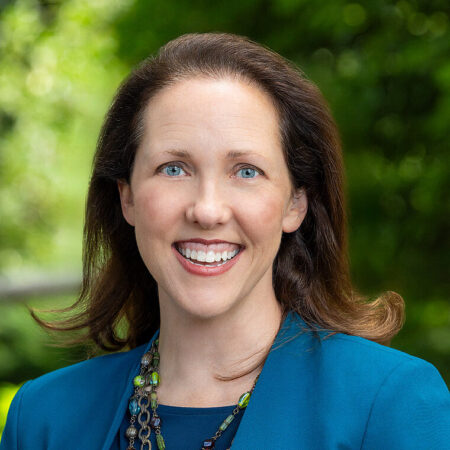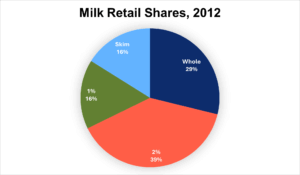What a great way to end a year — and begin a new one.
It’s hard to overstate the importance of the Whole Milk for Healthy Kids Act, which is now law, not only because it represents major progress in improving the nourishment of American schoolkids, but because of what it says about the moment that dairy is experiencing, and the great opportunities this industry has to build on that momentum.
Just as much as $11 billion in new plant investment the industry is now experiencing, this legislation’s passage tells the story of how dairy has reasserted itself as essential to the American diet, after that position was seemingly threatened merely a dozen years ago. When whole milk was restricted from school menus in 2012, it was billed as a health measure — in that telling, milk had too much saturated fat, and too many calories, to be acceptable in anything other than 1% or skim forms. The types of milk Americans drank most at the time — whole and 2% milkfat — were rendered suspect in the eyes of the federal government, a move with significant implications for federal programs and the next generation of milk-drinkers.
The Whole Milk for Healthy Kids Act, an effort led in the House by Rep. GT Thompson since 2019, frankly, was considered “aspirational” for several years — a nice idea, but not one with much hope of becoming reality. Demonization of dairy was rampant in media, and plant-based beverages were the next big thing, with sales and market share rising. It would have been easy at that time to have despaired for the industry, which also was going through a period of low prices and intensified consolidation.
But dairy farmers had a product they believed in. And in retrospect, from “almonds don’t lactate” statements at FDA to falling sales in some plant-based beverage categories, cracks were showing in the “Death of Dairy” armor.
The COVID-19 pandemic was the inflection point, as consumers increasingly sought tried-and-true nutrition options and became better educated about dairy’s value — as a result, they began buying noticeably more of it. Cottage cheese became a Gen Z craze that spread. Whey protein became the go-to energy supplement. Even as schools restricted options, the percentage of milk bought at retail that was whole or 2% increased. Plant-based beverage sales peaked in 2021 and have been declining since. Fluid milk sales reversed decades of decline, increasing in 2023.
Just as importantly, science began to more convincingly support what we knew all along — dairy fats don’t deserve demonization, and in fact have nutritional values we didn’t fully understand earlier. As fat concerns were shown to be overblown, it wasn’t just parents who endorsed dairy — it was leading nutritionists. And with marketplace and scientific consensus in alignment, Congress began to notice. Whole milk legislation moved from dream to no-brainer; in 2023 it became an overwhelmingly bipartisan reality in the House of Representatives, which easily passed GT Thompson’s bill. It would have passed the Senate too, were it not for concerns that Congress was outrunning the dietary guidelines, which was still looking backward at the science. We went to work on overcoming that concern, both in congressional advocacy and in reinforcing the newer finding on whole milk benefits.
And here we are today.
A successful effort such as this doesn’t come without a lot of work from a lot of people. Without consumer demand, political popularity doesn’t happen. Without scientists, the reassurance of skeptics that whole milk really should be back in schools doesn’t happen. Without the leadership in Congress, beginning with GT Thompson and co-sponsor Rep. Kim Schrier, as well as Senate sponsors Sens. Roger Marshall and Peter Welch, the bill doesn’t get the congressional attention needed to move forward. And without the united strength of dairy advocates, including company, state-level and association lobbyists, this issue doesn’t get in front of enough lawmaker desks to break through.
But I would like to single out one person for special recognition as this critical legislation is poised for passage. Paul Bleiberg, our Executive Vice President for Government Relations, fought for this legislation every stop of the way. From his early conversations with Thompson staff to his efforts to keep the legislation on the agenda, Paul has known how to harness public sentiment for effective advocacy and show leadership across the entire policy community to make the legislation got over the finish line. Paul deserves special recognition for efforts that will meaningfully improve the nutrition of children and the benefits that dairy farmers can provide. That’s a unique accomplishment, and Paul deserves all recognition he may receive.
Working for dairy is what we do. But it’s not just that. We work for dairy so that dairy can work for everyone. Restoring whole milk in schools helps dairy farmers better nourish a nation. That’s no small thing. It takes years.
Yes, there are frustrations — with the government, with prices, with all the challenges and inadequacies of living and working in challenging times, every day. But let’s not pass up the moment to celebrate, recognize and appreciate. Thank you to Paul, to the dairy community, to congressional leaders, and to consumers. We’re making a better world, and that doesn’t happen without you. Happy New Year.
Gregg Doud
President & CEO, NMPF


 By Shawna Morris,
By Shawna Morris, 

 By Dr. Jamie Jonker, Chief Science Officer
By Dr. Jamie Jonker, Chief Science Officer



